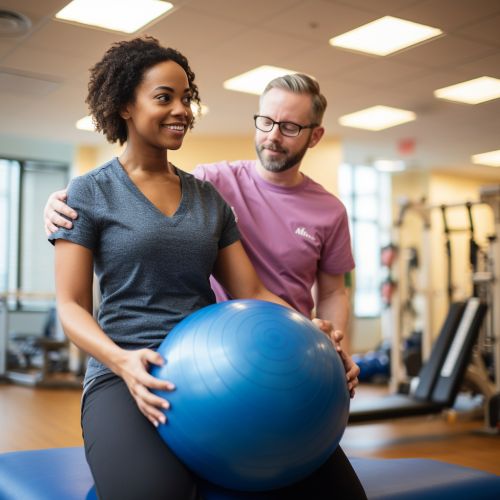Rehabilitation Medicine
Introduction
Rehabilitation Medicine, also known as Physical Medicine and Rehabilitation (PM&R) or physiatry, is a branch of medicine that aims to enhance and restore functional ability and quality of life to those with physical impairments or disabilities. This can include conditions such as spinal cord injuries, brain injuries, strokes, as well as pain or disability due to muscle, ligament or nerve damage. A physician having completed training in this field is referred to as a physiatrist.


History
The field of Rehabilitation Medicine gained recognition during World War I and II, where the need to rehabilitate soldiers who had been disabled from war injuries became apparent. The specialty has since evolved, with advancements in medical technology and therapeutic strategies significantly improving the prognosis and quality of life for patients with disabilities.
Scope of Rehabilitation Medicine
Rehabilitation Medicine encompasses a wide range of areas, including but not limited to:
Neurological Rehabilitation
Neurological Rehabilitation is a complex medical process which aims to aid recovery from a neurological disorder, and to minimize and/or compensate for any functional alterations resulting from it.
Cardiac Rehabilitation
Cardiac Rehabilitation is a professionally supervised program to help people recover from heart attacks, heart surgery and percutaneous coronary intervention (PCI) procedures such as stenting and angioplasty.
Pulmonary Rehabilitation
Pulmonary Rehabilitation is an integral part of the clinical management and health maintenance of those patients with chronic respiratory disease who remain symptomatic or continue to have decreased function despite standard medical treatment.
Pediatric Rehabilitation
Pediatric Rehabilitation is concerned with the diagnosis, treatment, and management of congenital and childhood-onset physical impairments and disabilities.
Geriatric Rehabilitation
Geriatric Rehabilitation covers a wide area of issues concerning people as they go through normal adult aging but is usually focused on the older adult.
Principles of Rehabilitation Medicine
The primary principles of Rehabilitation Medicine include improving quality of life through increased independence, improving physical function, and addressing psychosocial issues associated with disability. This is achieved through a multidisciplinary approach, involving a team of healthcare professionals including physiatrists, physical therapists, occupational therapists, speech and language therapists, and psychologists.
Rehabilitation Team
The Rehabilitation Team is a group of different healthcare professionals who work together to help patients recover from their injuries or illnesses. This team is often led by a physiatrist and may include physical therapists, occupational therapists, speech and language therapists, and psychologists.
Rehabilitation Techniques
Rehabilitation techniques vary depending on the type of injury or illness, but can include physical therapy, occupational therapy, speech and language therapy, and psychological therapy. These techniques aim to help patients regain function, improve mobility, relieve pain, and prevent or limit physical disabilities.
Challenges in Rehabilitation Medicine
Despite the advancements in Rehabilitation Medicine, there are still many challenges that the field faces. These include limited resources, lack of awareness and understanding of the field, and the need for more research and development in rehabilitation techniques and technologies.
Future of Rehabilitation Medicine
The future of Rehabilitation Medicine looks promising, with advancements in technology such as robotics and virtual reality being used in rehabilitation techniques. There is also a growing emphasis on preventative care and improving the overall health and wellness of patients.
